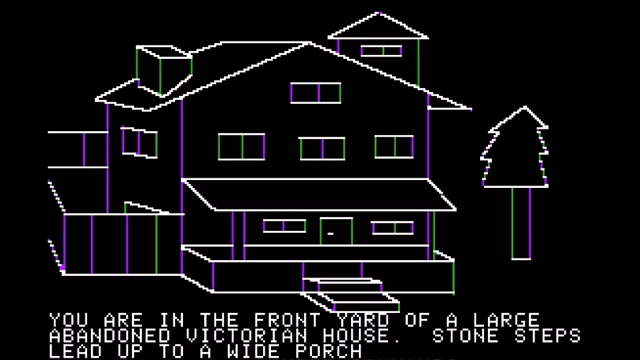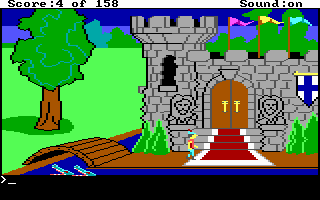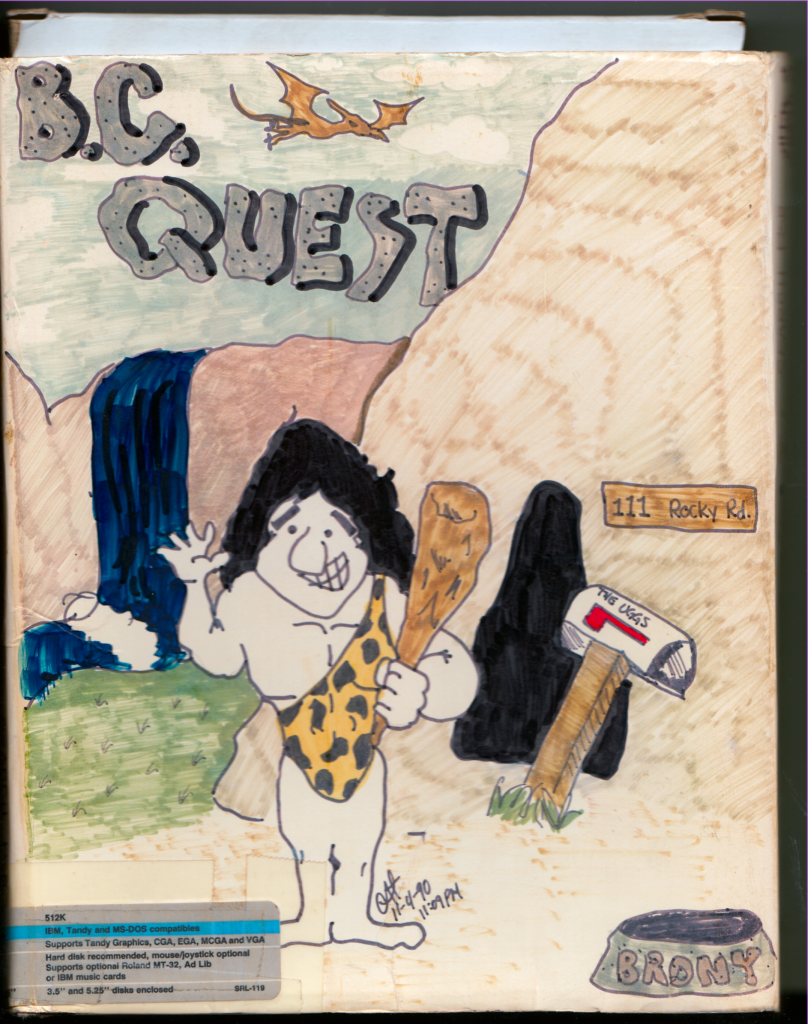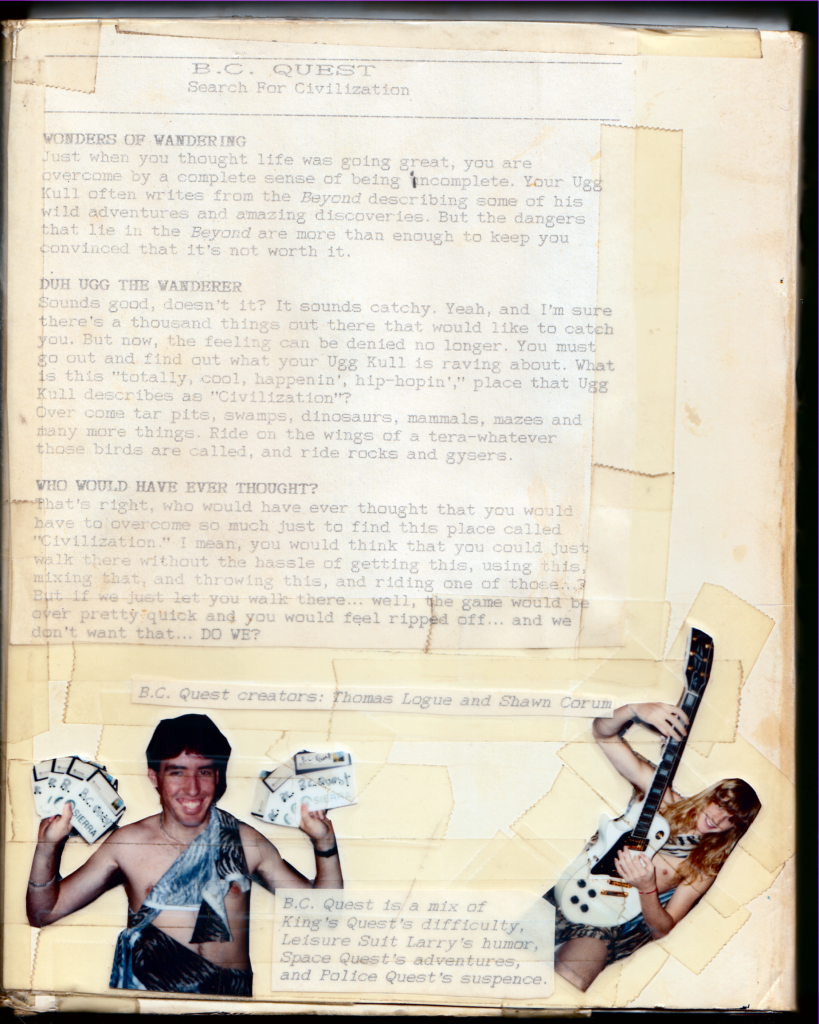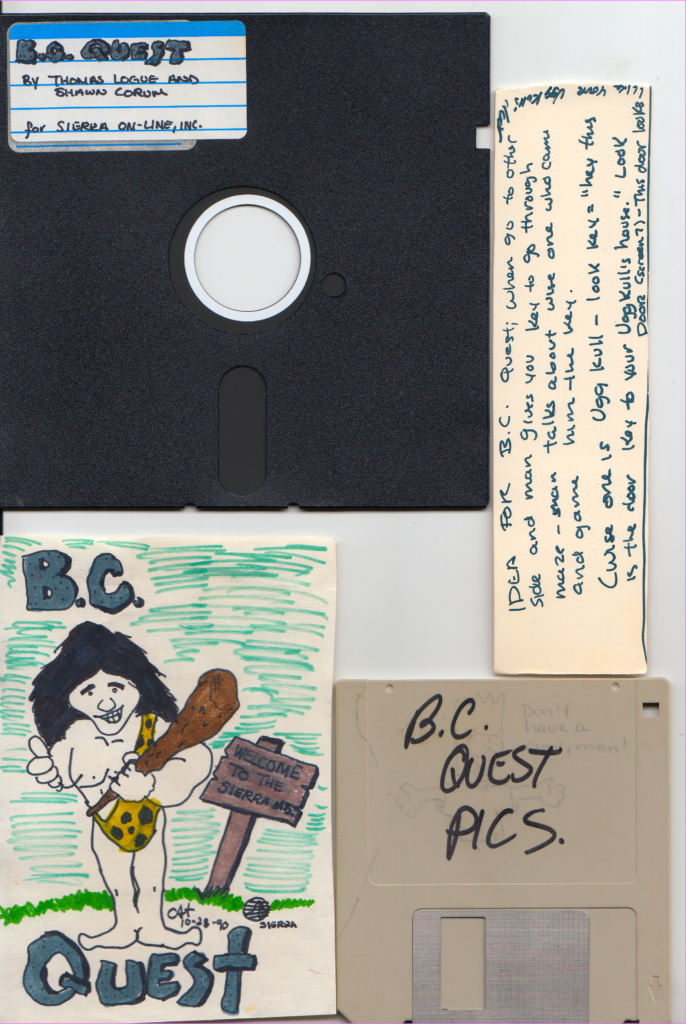… and are you talking about the comic strip called B.C.?
No. This is in reference to a game.
Oh, you must mean B.C.’s Quest for Tires?
Grrr…
Truth of the matter, this dates back to 1990, when myself, and my good friend at the time, Shawn Corum, were dreamers.
You see, at the time there was a massive computer company known as Sierra On-Line, Inc.
But first, a little history about Sierra.
Sierra was founded by husband and wife power couple, Ken and Roberta Williams. Ken was the technical side with knowledge of programming and Roberta was the creative side, with her mind full of wild ideas – ideas that she presented to Ken, who didn’t think some of which was possible. Originally they had wanted to develop software for the new Apple II computer, but Roberta had much grander ideas! Roberta, who had loved the text adventure games (side note – I too was a fan of text adventure games, and made my own called Final Soul – go on, check it out! It opens a new window and runs on modern machines now!) had wanted to bring graphical adventures to the Apple II computers!
This seemed like an impossible notion, until Ken banged his head against the computer several times and found a way to code such a thing – as rough as it might be, they’d discovered a way to add graphics to their “text adventure” game – and thus developed Mystery House.
In 1983, IBM contacted Ken and Roberta Williams and had asked them to develop a game for their PCjr. They would go on to develop the Adventure Game Interpreter (which would quickly simply be called the AGI engine). This AGI engine would go on to be used for the first set of games that Sierra would go on to develop!
In 1984, Sierra would release King’s Quest for the PCjr, which, tragically did not do so well. But when Tandy released the Tandy 1000 (I posted about my own Tandy 1000 SX on here, and also had a picture on another site I run over at Larry Laffer, with me dressed as Leisure Suit Larry standing in front of my Tandy 1000 SX!) – and Ken and Roberta decided to try it on the superior computer, as well as the Apple II – and in this case the game was met with immediate success! This would cause Sierra to employ more games, along the same lines…
- Al Lowe created Leisure Suit Larry
- Mark Crowe & Scott Murphy created Space Quest
- Jim Walls created Police Quest
And this was just the beginning! In 1988 Sierra created a new “game engine” called Sierra’s Creative Interpreter which would go on to simply be called SCI. It was far more complex, allowed for text parser and EGA (16 color) graphics. King’s Quest IV (that’s right, Sierra had already made up to King’s Quest IV by this point!) had originally been released in the AGI engine, was then released with this new SCI engine!
Also at this time, Sierra would bring on others, such as…
- Lori and Corey Cole created Hero’s Quest (which, due to some legal issues with Mattel, who had a board game called Hero Quest, they would go on to change the game’s title later to Quest for Glory).
In 1990, Sierra looked unstoppable. Sierra released King’s Quest V with their new SCI1 (newly improved SCI engine) that now allowed for a stunning 256 colors. The game would go on to sell over 500,000 copies – the first time any Sierra game had done so!
This propelled Sierra ever forward. In 1991 they launched something called The Sierra Network, which was a service you could log into and chat, play games, etc. Oh, it had a monthly fee (or hourly fee), and trust me – it was not cheap. But as someone who was an avid user of it (and spent more time than I probably should have on it!) – it also happened to be where I would end up meeting the woman who would become my wife years later.
Sierra didn’t stop there… they brought on…
- Jane Jensen created the critically acclaimed Gabriel Knight, which included voice actors such as Mark Hamill (you might know him as Luke Skywalker from Star Wars, among the thousands! of other voices he now does) and Tim Curry (oh, you know, from a few minor things such as The Rocky Horror Picture Show, Muppet Treasure Island, Legend and my all time favorite movie, Clue)!
In 1995 they made FMV (full motion video) games such as Phantasmagoria, which was by Roberta Williams, who’d made the King’s Quest series – and she even said it was her favorite game to have worked on! (Side note – it’s such a fantastic game! I have so many great memories tied to that game!)
So how does this all relate to the title of “B.C. Quest”…
Well, see back there where Sierra had made games that all had “Quest” somewhere in the title… that was just some of them (King’s Quest, Police Quest, Hero’s Quest/Quest for Glory, Space Quest) – there were other games too (EcoQuest, Conquest of Camelot/Conquest of the Longbow, The Colonel’s BeQuest)
Well, there Shawn and I were… 20 years old, dreaming big… We looked at what Sierra had done…
- They made a real life city game in a modern world (Police Quest)
- They made a comedy adult game (Leisure Suit Larry)
- They covered the fantasy game (King’s Quest and Quest for Glory)
- They covered futuristic (Space Quest)
- They covered the ocean/economic (EcoQuest)
- They covered legends (Conquest of Camelot/Conquest of the Longbow)
- They covered murder mysteries (The Colonel’s Bequest)
What had they not covered yet?
Prehistoric!
So Shawn and I got to scribbling down ideas. We had a board, where we were drawing out the map, different quest ideas, how the game would progress, different puzzle ideas, we drew a rough map using (I can’t remember the name of it now, but it was essentially Windows Paint… it might have even been called Paint even way back then) and I did some coding using QBasic to try and mimic how some of it might work.
Our game featured a character named Duh Ugg (pronounced “Doug”) who was a caveman, and had his father’s brother (Ugg Kull) who had “ventured beyond” – and now Duh Ugg wanted to do the same. In our game “B.C.” did not stand for Before Christ, rather it stood for “Before Civilization.” Because as Duh Ugg travels, he ends up falling through a lake and getting frozen. However, he’d awake much, much later, washing ashore – and the world has drastically changed. It was now 1990!
It took several months – but the two of us had actually developed a game idea from start to finish. The next part I am not super clear – if we reached out to Sierra and got an NDA or if we worked with Shawn’s dad who developed an NDA for us.
Anyway, we took all of this stuff, printed it out and saved it on a disk as a PDF and sent it on the way to Sierra.
We actually got a reply.
And it was crushing. But also great.
I wish I still had all the letters I used to get back from Sierra (at the time, I was very actively writing into their InterAction magazine – usually those correspondences were with – I am pretty sure it was Bridget McKenna – but I don’t think it was her who replied to our game idea… I can’t remember who that was).
However, it’d gone along the lines of: What you have here is a collection of very wonderful ideas. This looks like it would be a fun game to play and it looks like the two of you put a lot of time, effort and love into this – and this is something we at Sierra love to see! We want our developers to have that passion and drive! And we love seeing that our games have inspired both of you to take this step! However, I am sad to say that Sierra released a game in 1983 called B.C.’s Quest for Tires.
What they said after that, I can’t remember. But it was pretty much “Keep trying and never give up.”
So what’s this about?
Well, I was in a recent discussion on the Sierra Help Forums talking about this… and I dug up the game box we designed and the manual we designed and all of that… and scanned it… along with the “promotional photos” we’d sent with our proposal… and figured, why not post them here for archiving sake? Even though it has nothing to do with Neverending Nights, I truly doubt I would have made Neverending Nights without Sierra… because Sierra was another step in fueling my creativity.
So let’s take a look…
The Mug!
That’s right. We went hard. When we came up with this whole idea, we were so confident this was going to work out, we got ourselves each a mug… I still have mine to this day!

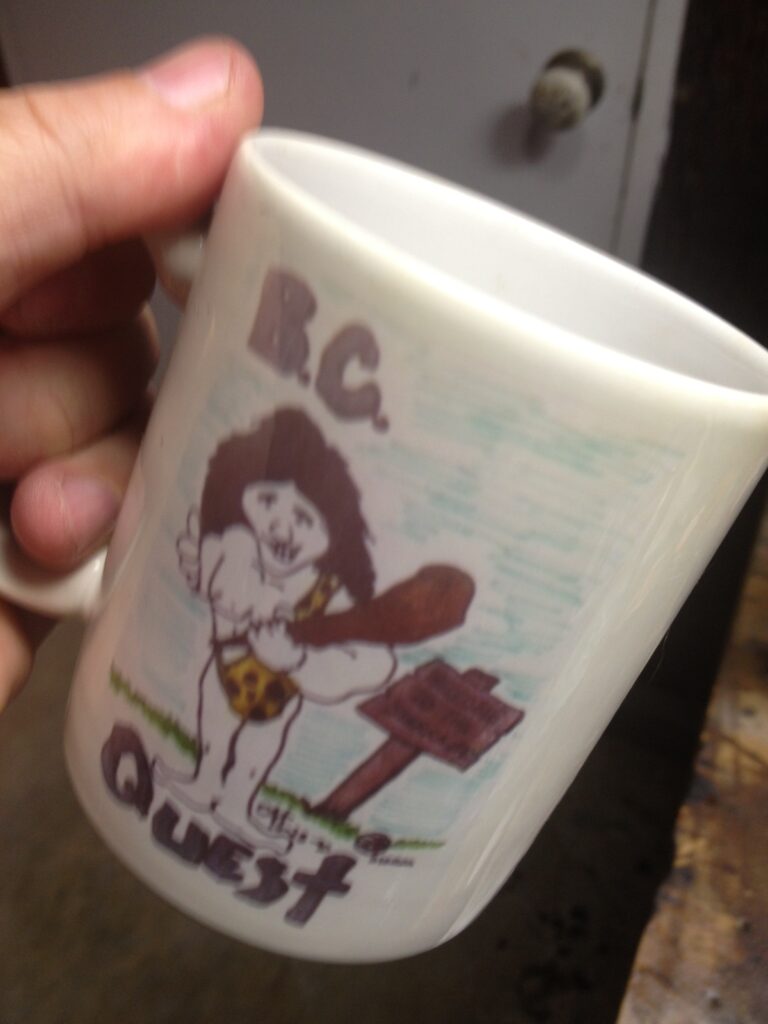
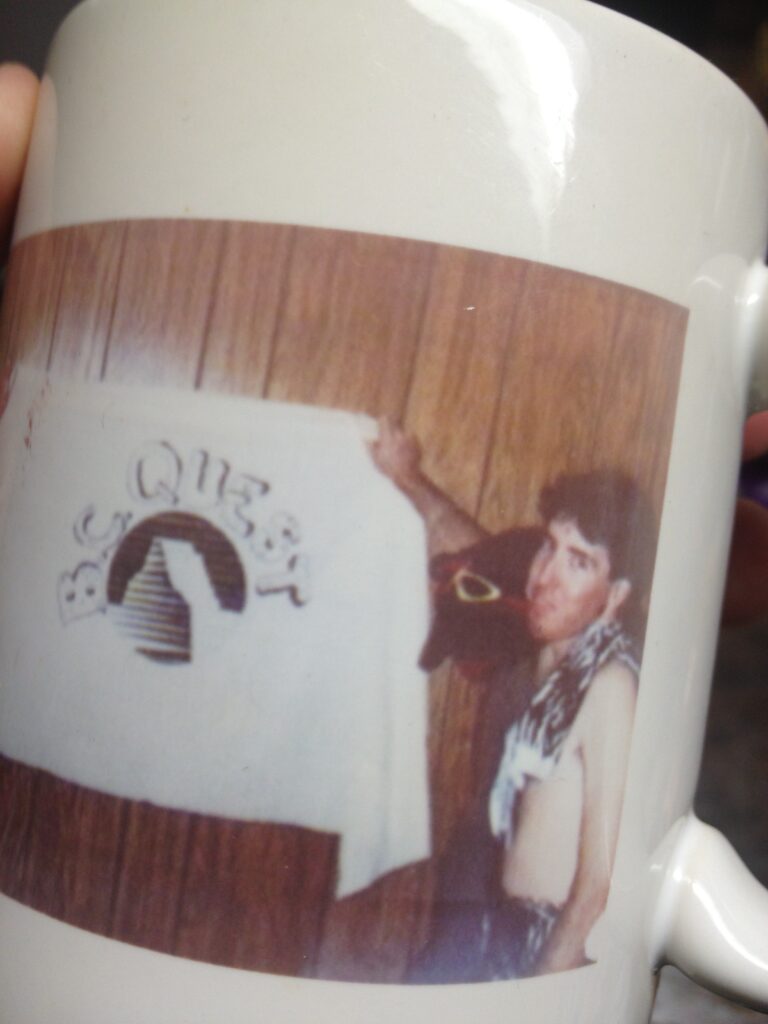
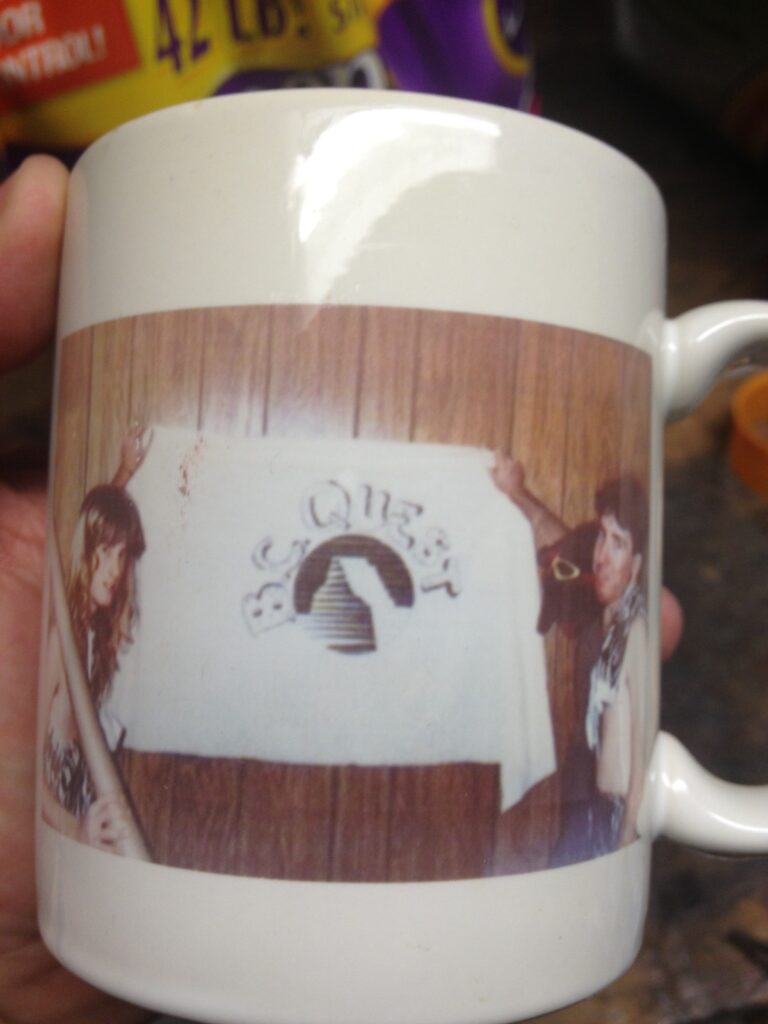
The Promotional Photo(s)… There was more than one?
The “promotional photo” we included with our yellow envelope was this one…
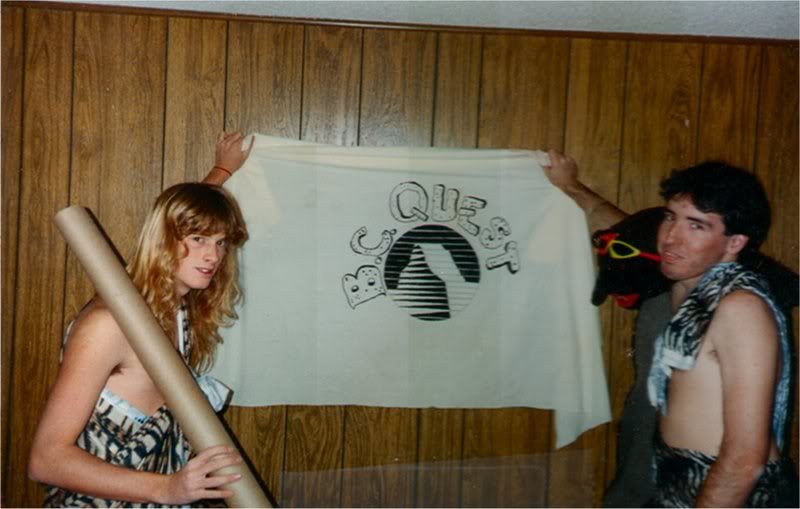
Side note… the bear “rug” on my shoulders… those glasses were from Pizza Hut, from, probably a Back to the Future promotion or something… Edit: My wild guess was correct, it was Back to the Future II… I knew it was Pizza Hut, because I was or had been working there…
But there were other photos we’d taken…
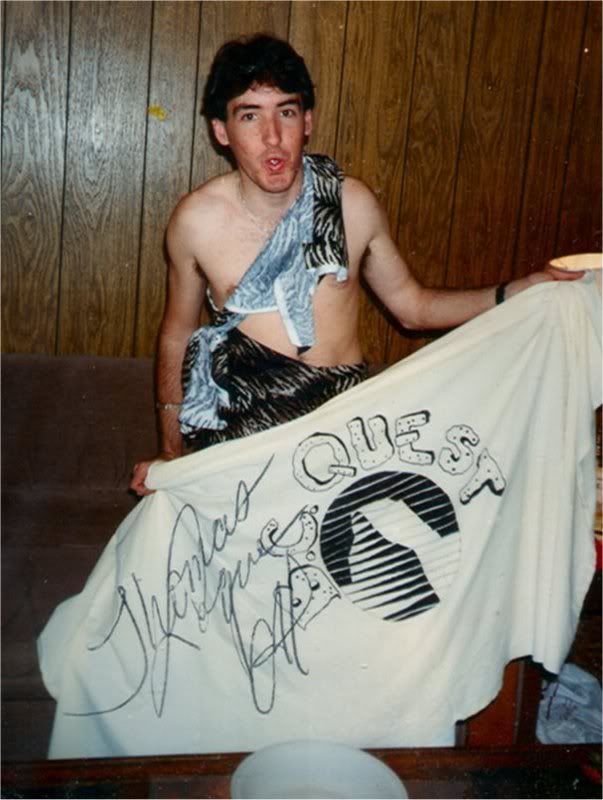


Here are some more scattered photos with the B.C. Quest cover, my mother & father’s dog with our thing we’d made on the sheet, and stuff…
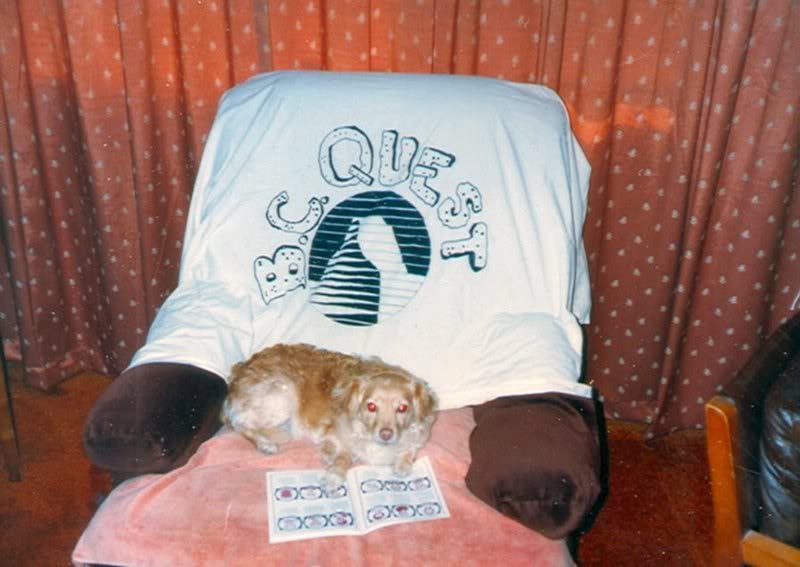
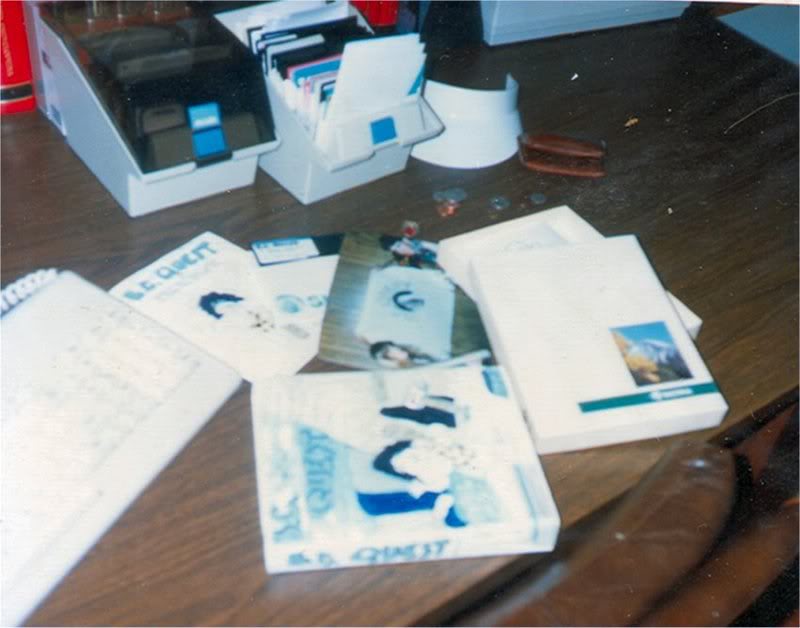
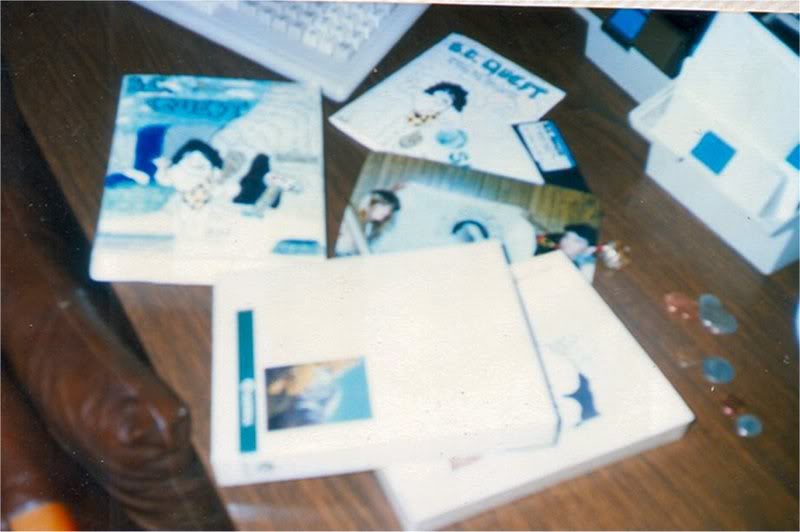
So let’s show off the box art and such, since the above photos barely show them… here’s some scans…
The Box (click the images to see the full size)
Because I didn’t want to use (and lose) an original Sierra disk sleeve, I’d made several “fake” Sierra disk sleeves such as this (this one has the 5.25″ disk that probably, if it still works, actually has text files we put our notes on… sadly, I don’t have a 5.25″ drive anymore to find out what’s on this disk…)

We also loved how Hero’s Quest/Quest for Glory had a little extra manual, so we’d created the same thing…
The Caveman’s Survival Guide
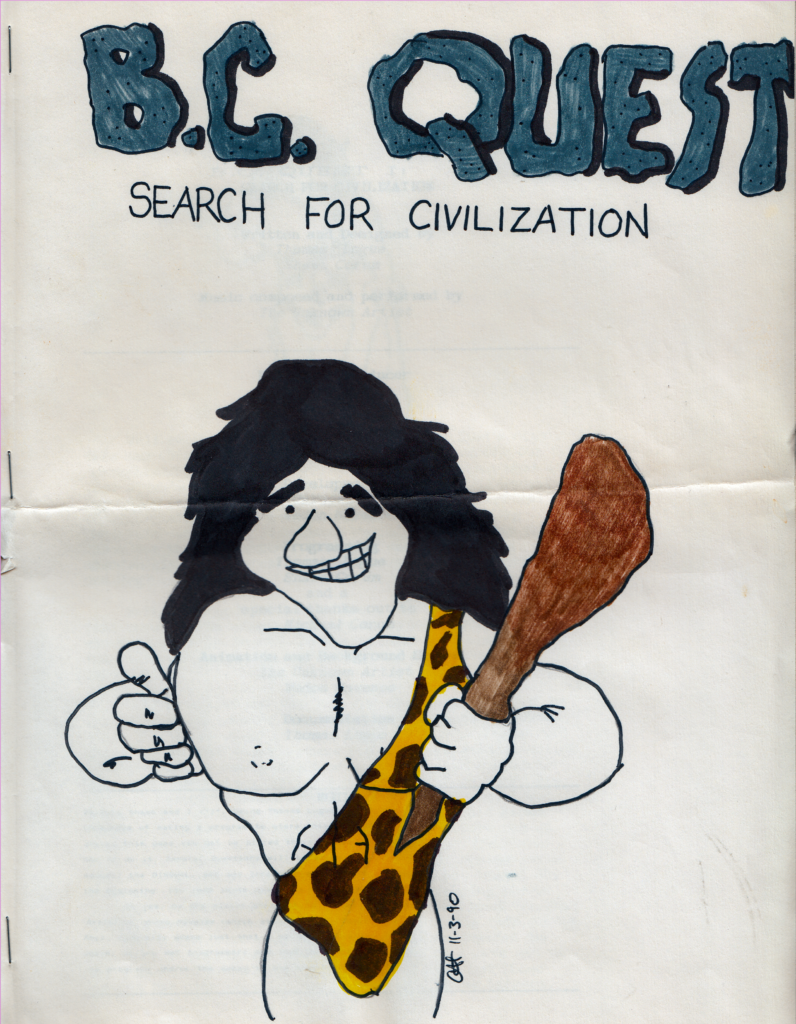
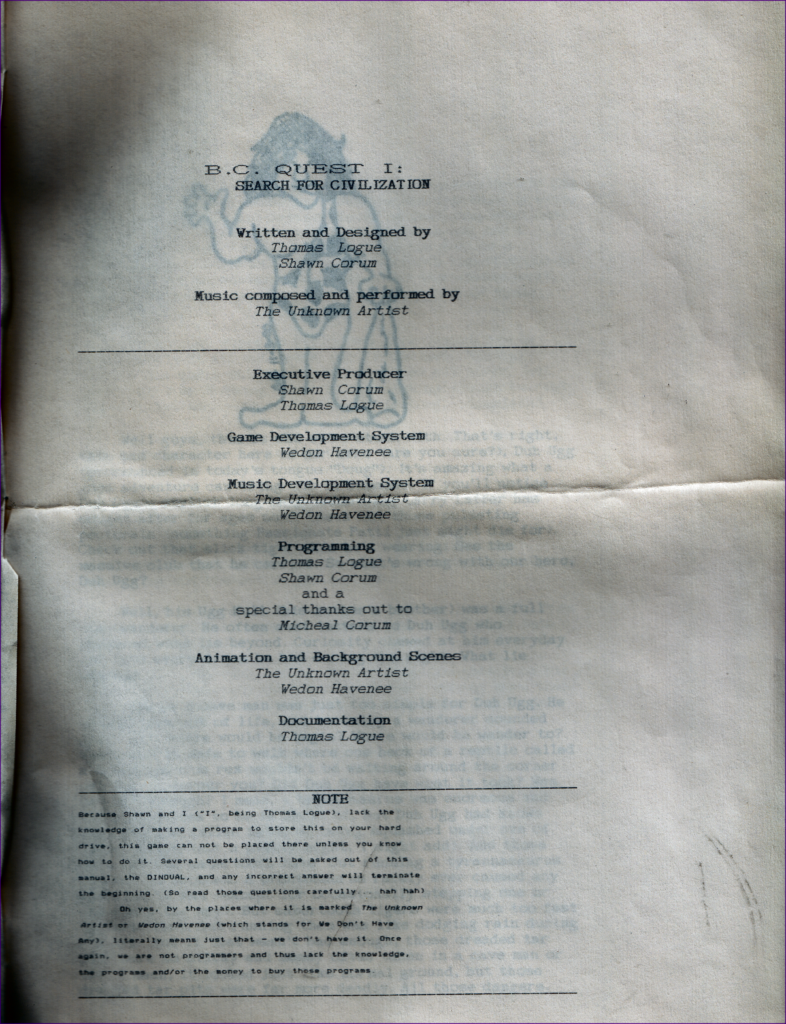
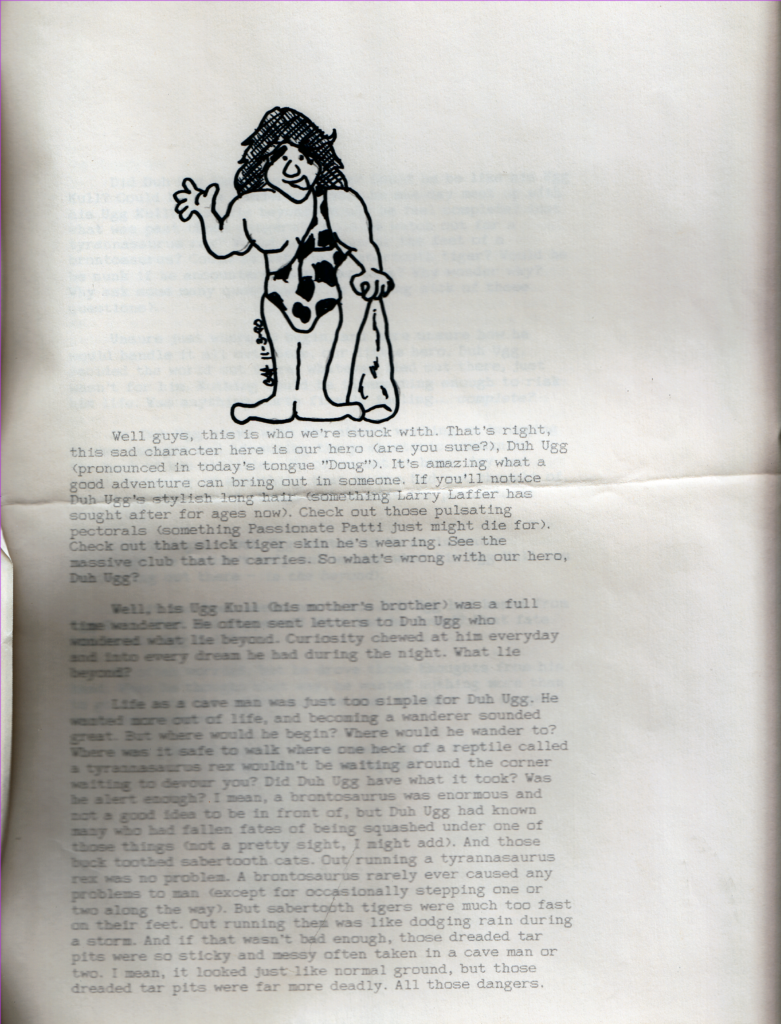
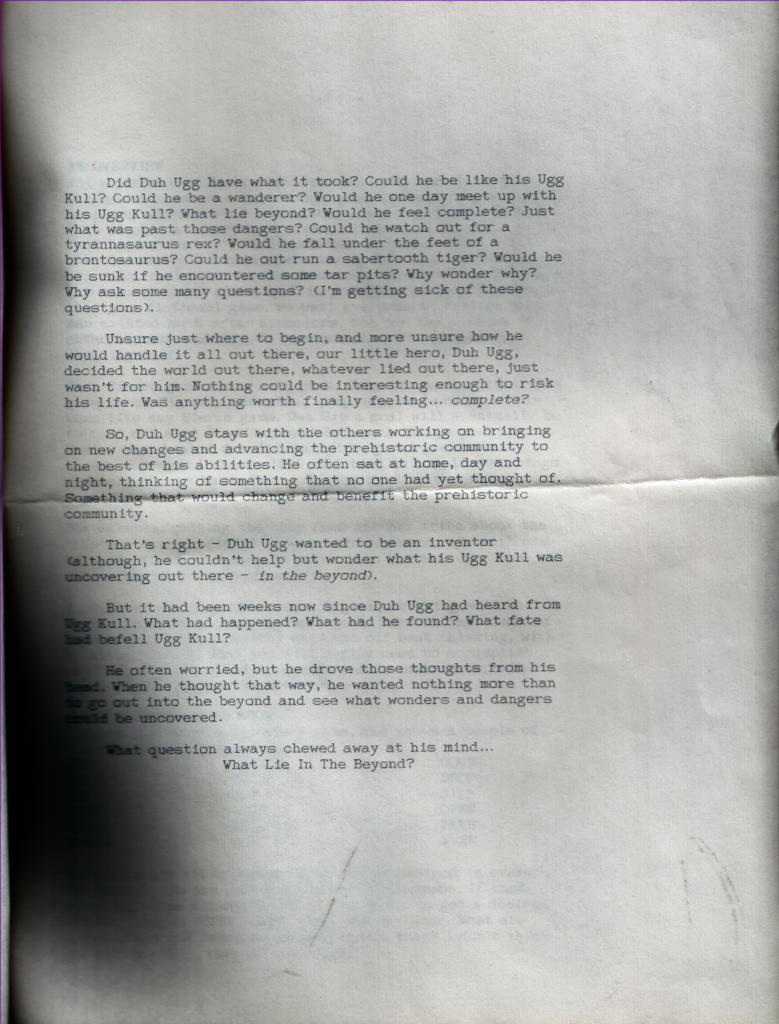
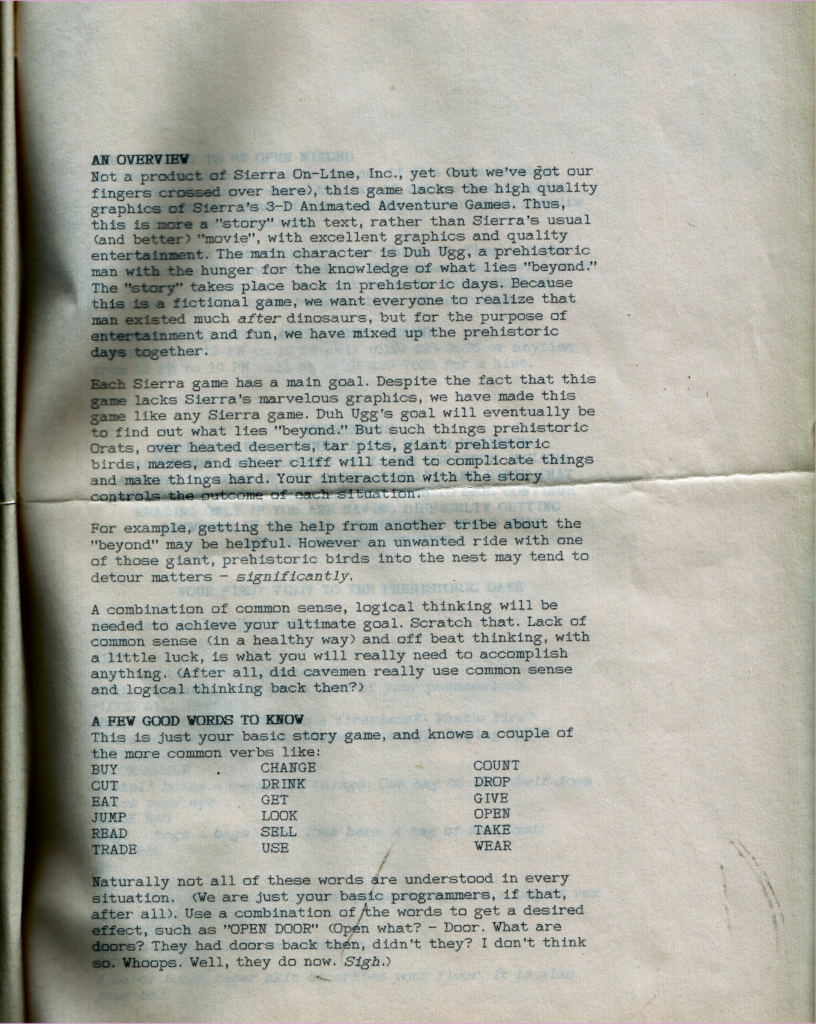
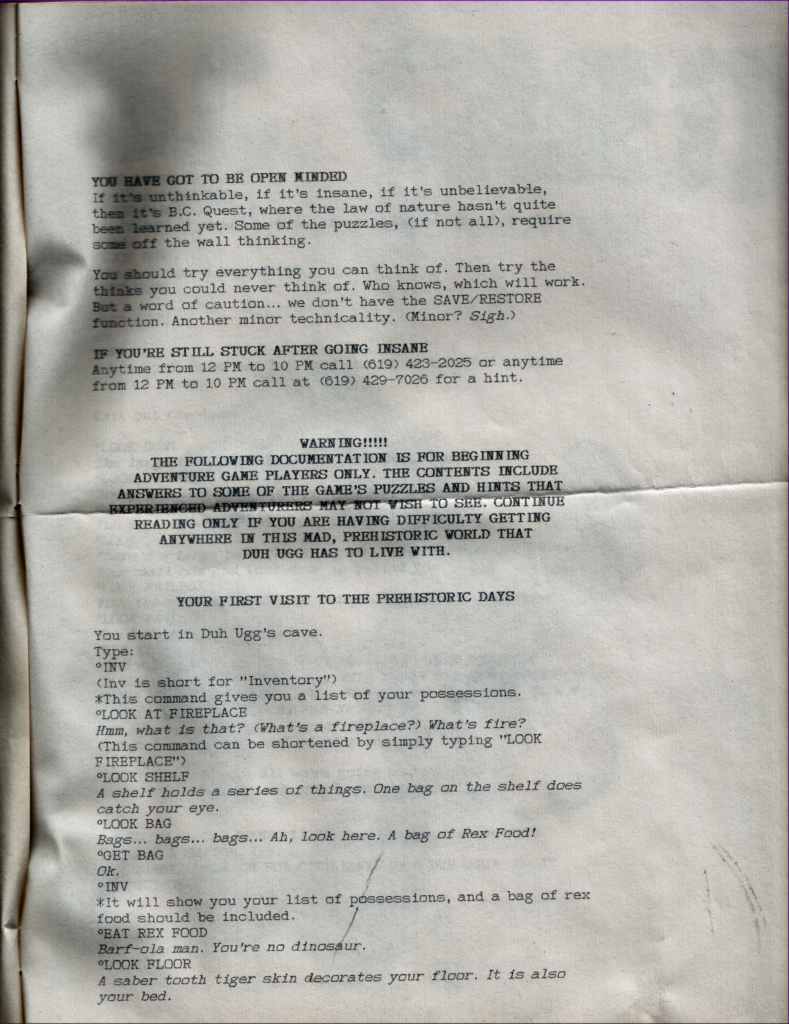
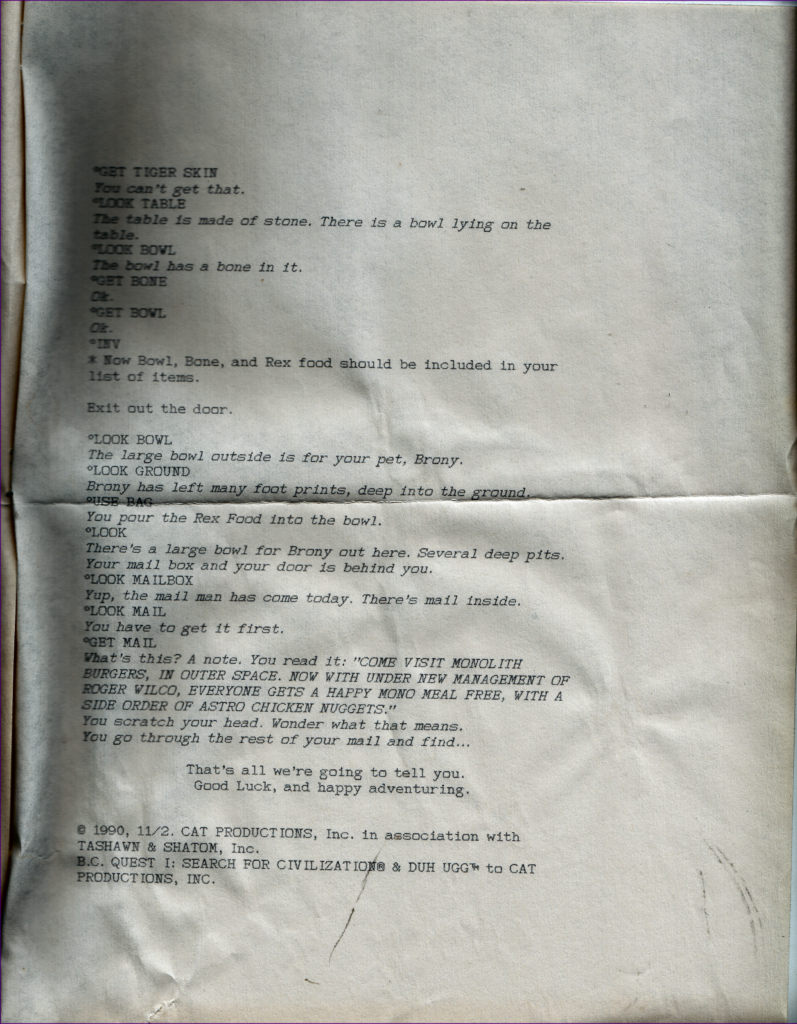
And finally…
The instruction manual

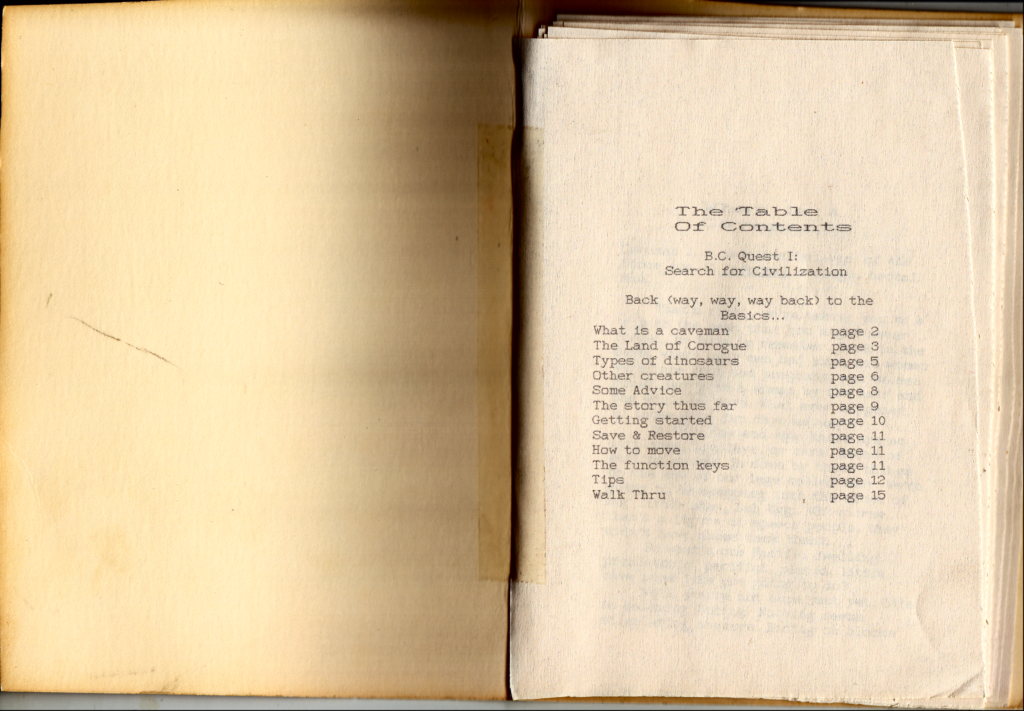
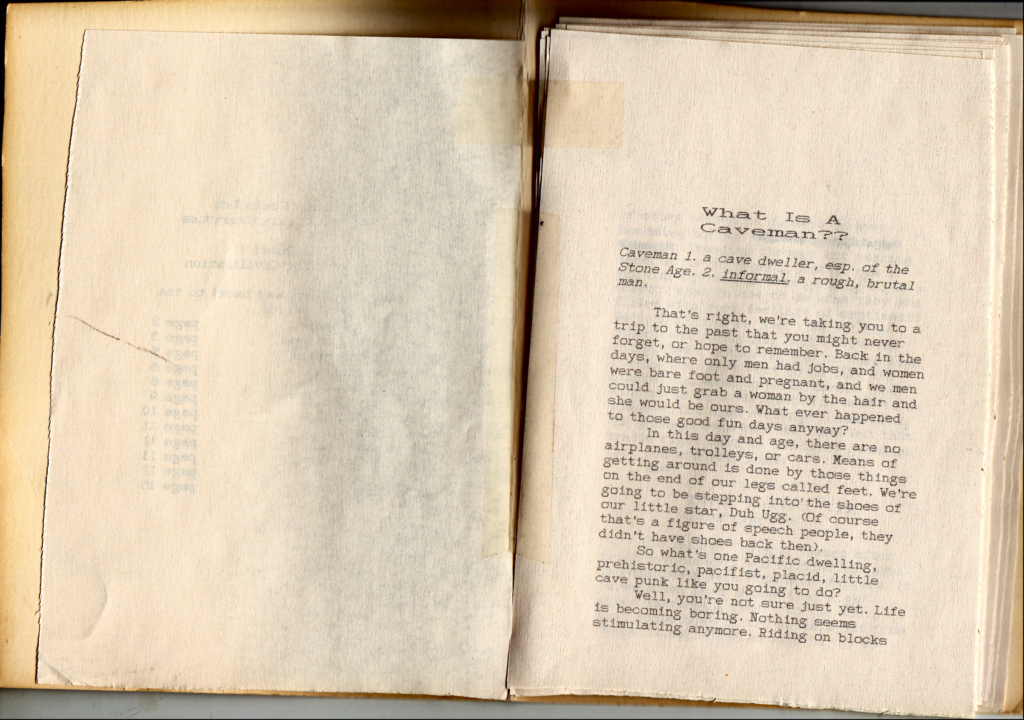
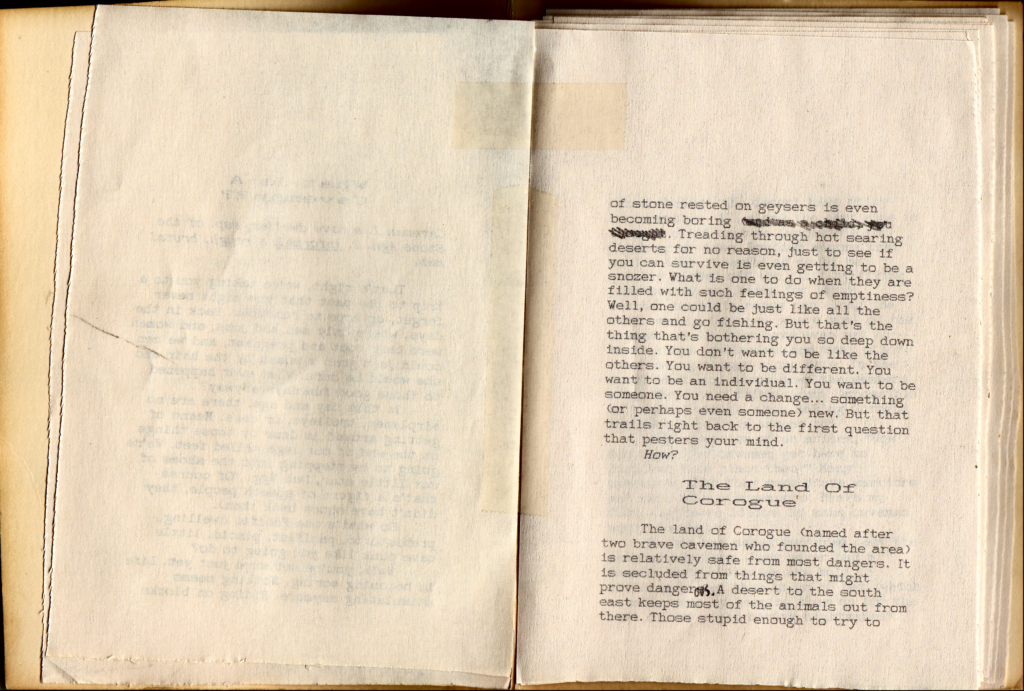
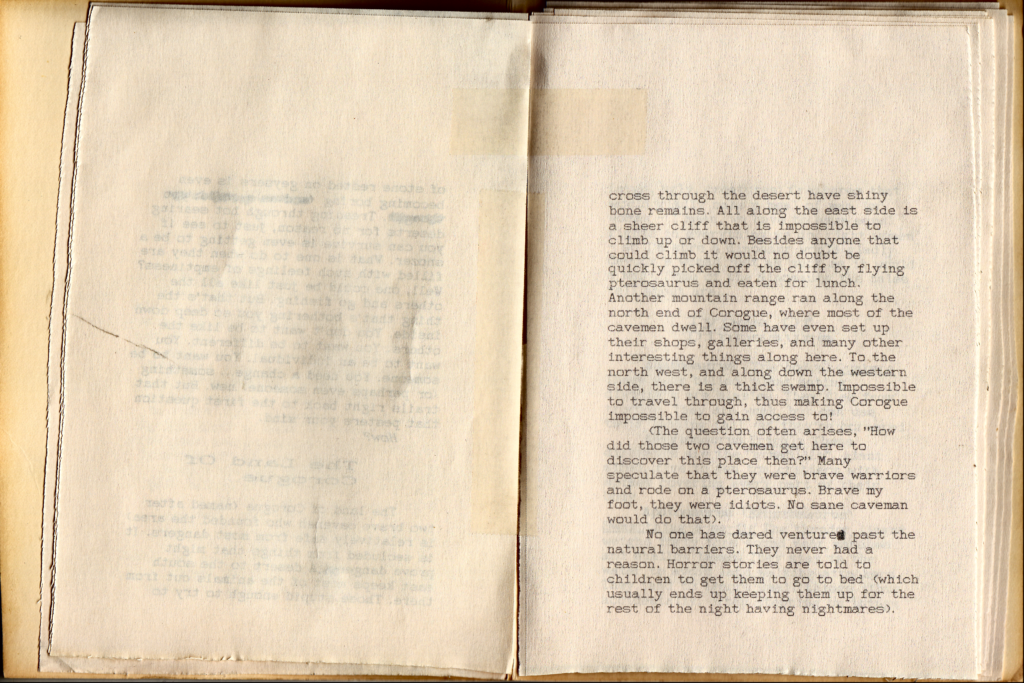
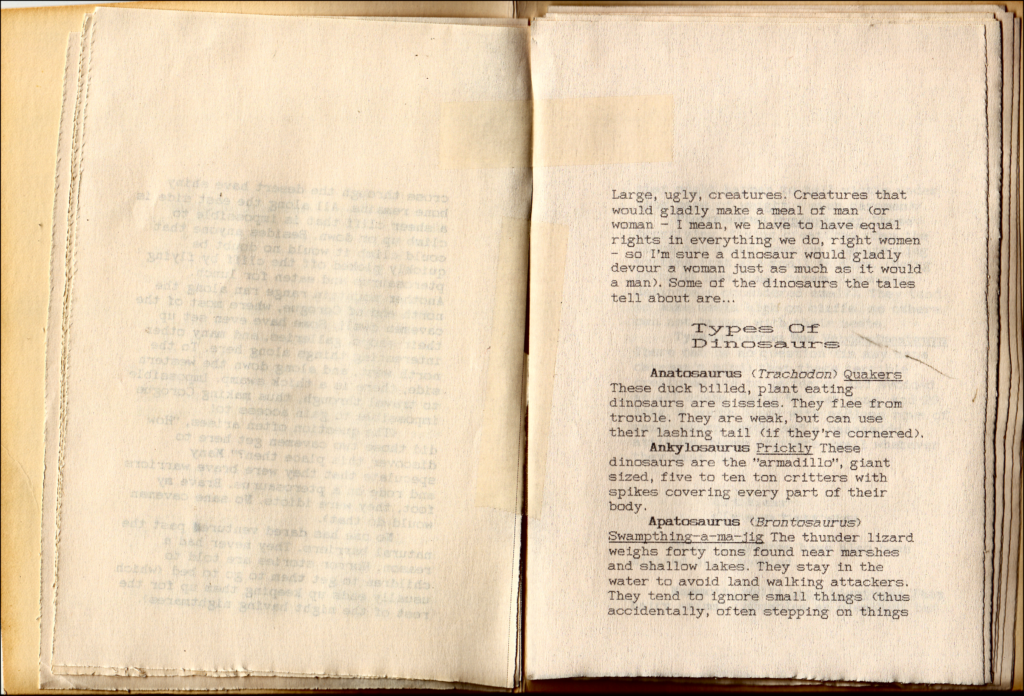

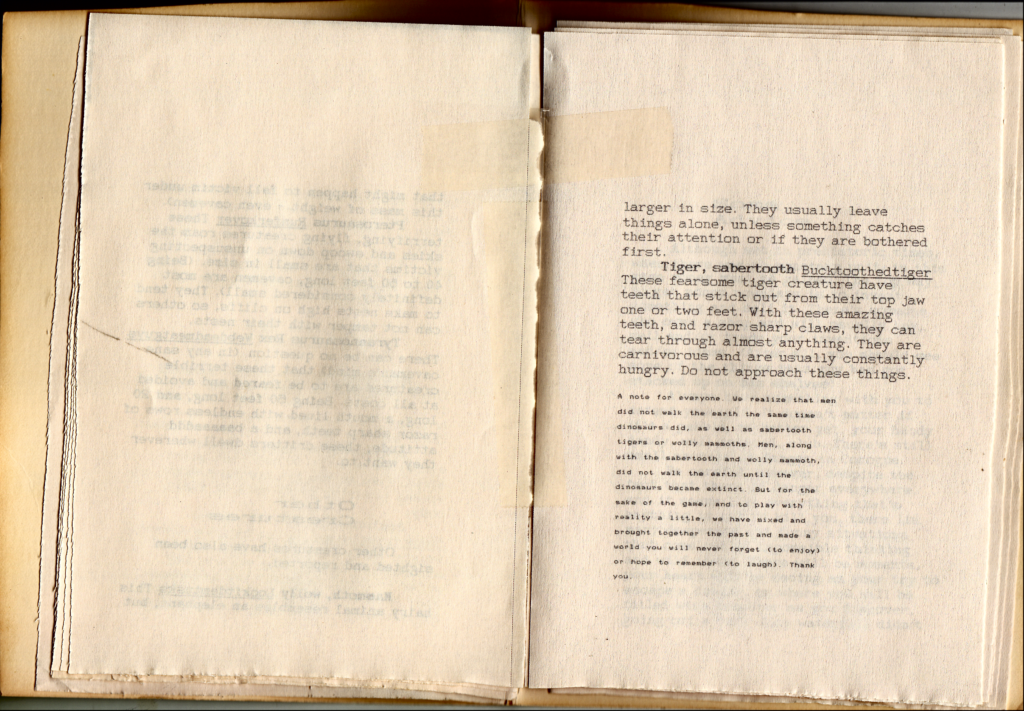
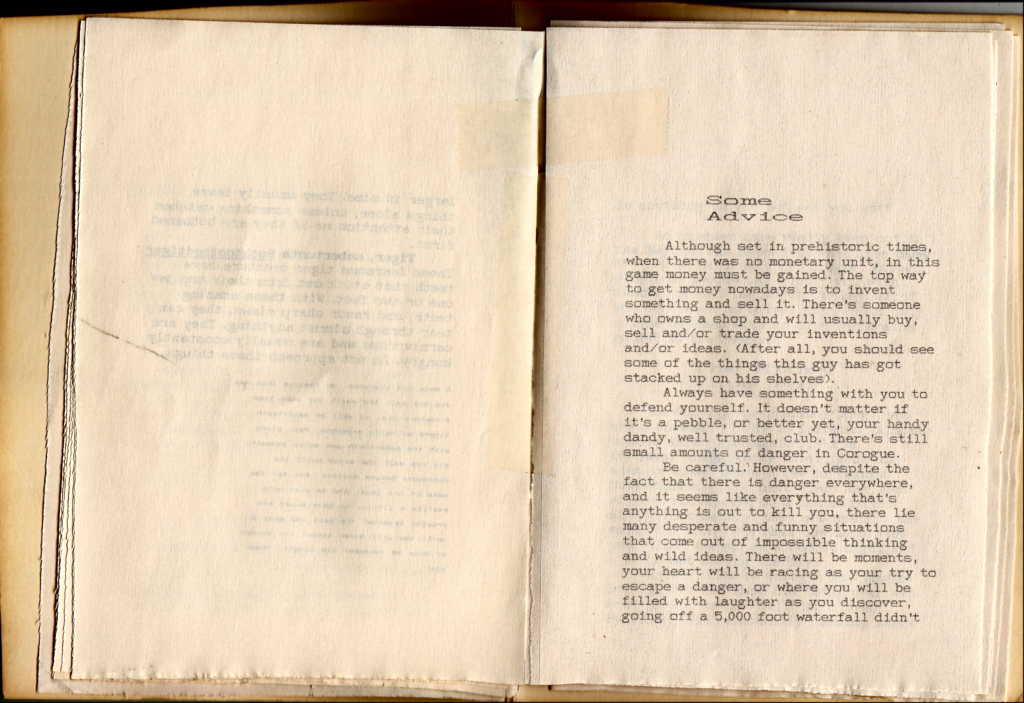
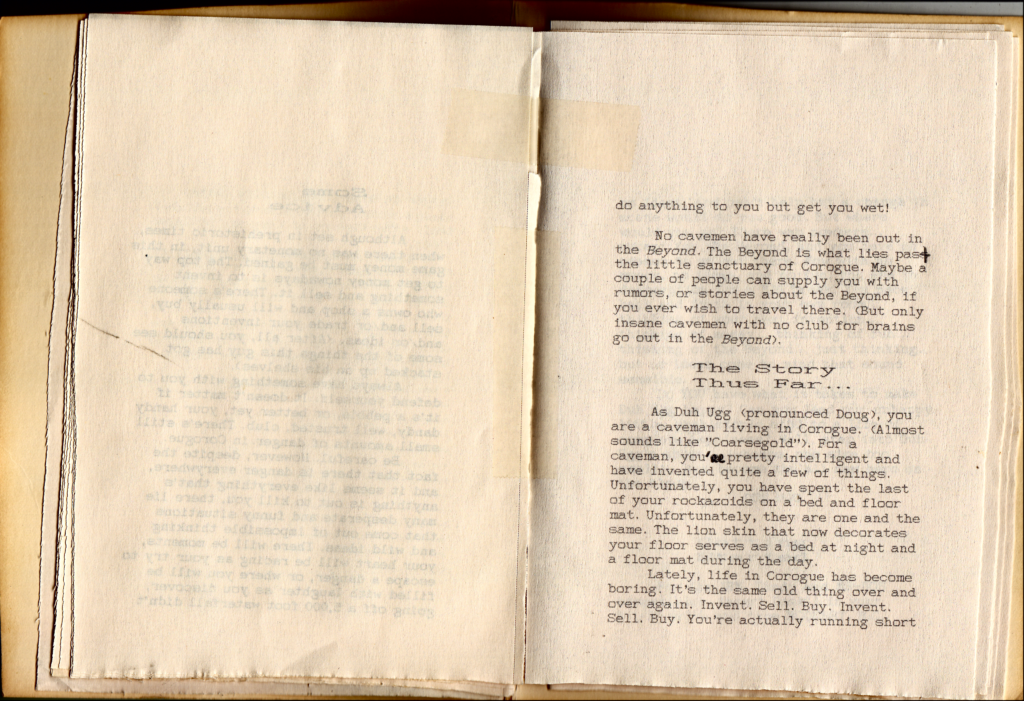
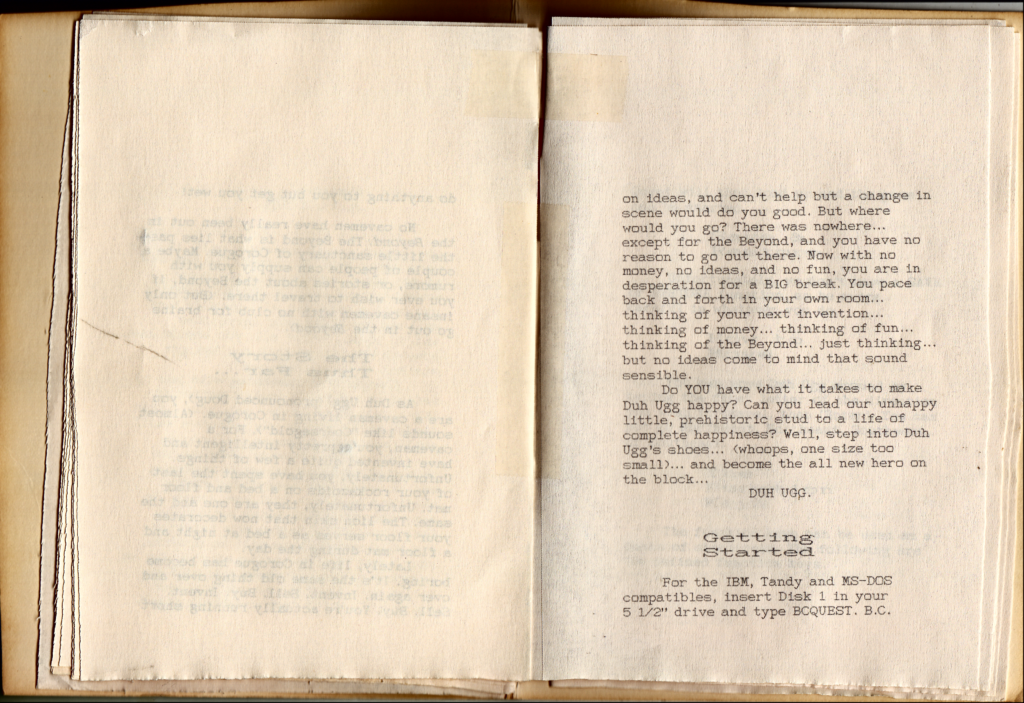

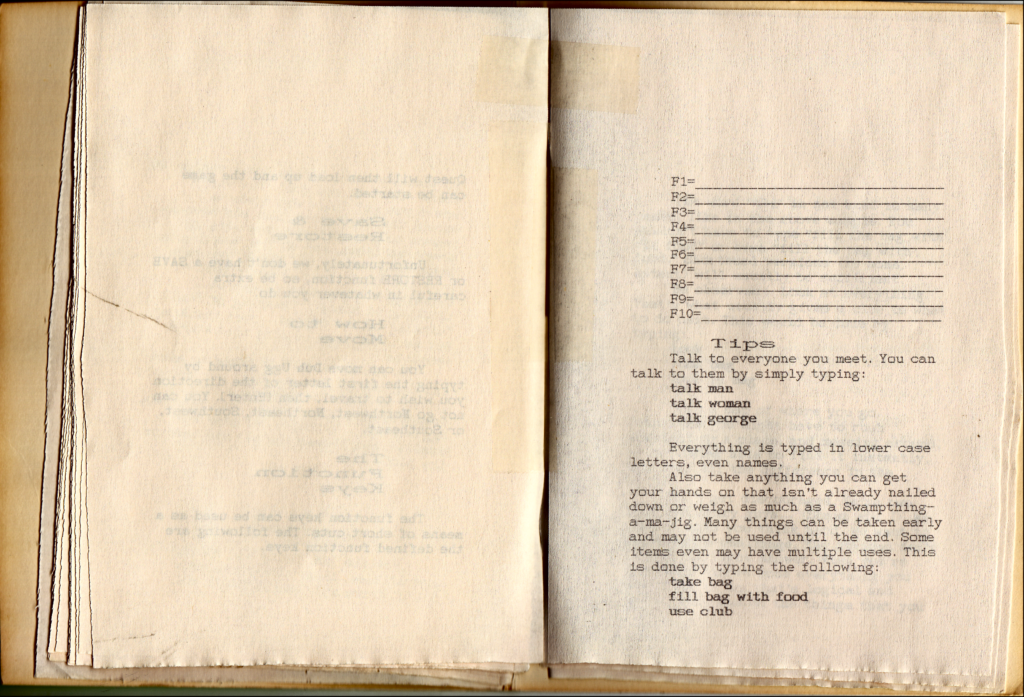


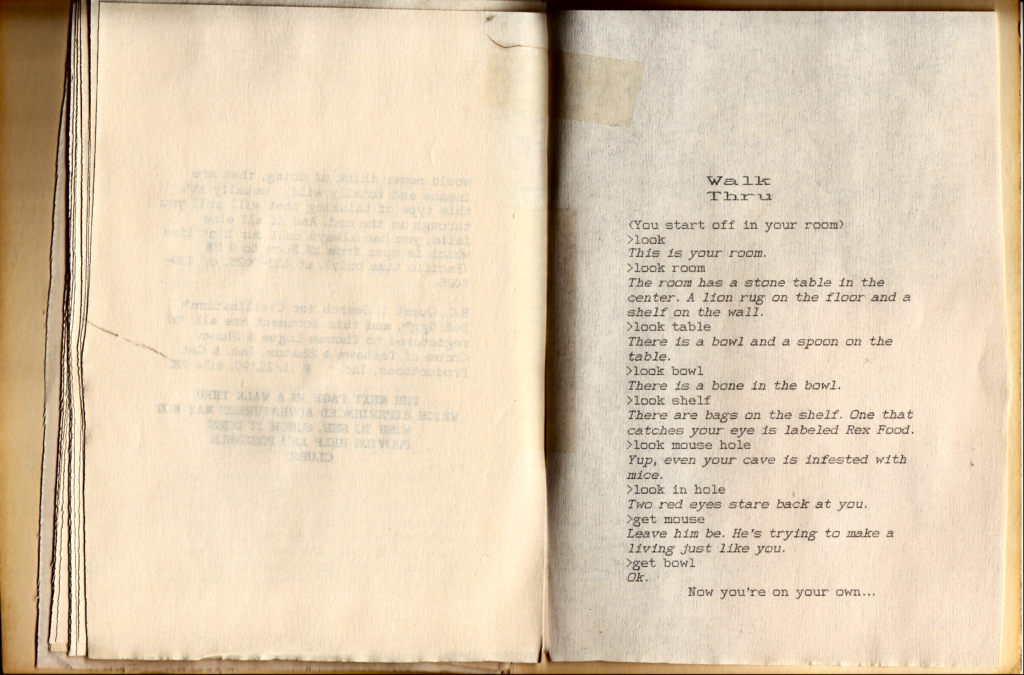
Even though this never became the game we’d dreamed it would be… it became the memory I will never forget, regardless.
- Tawmis.


